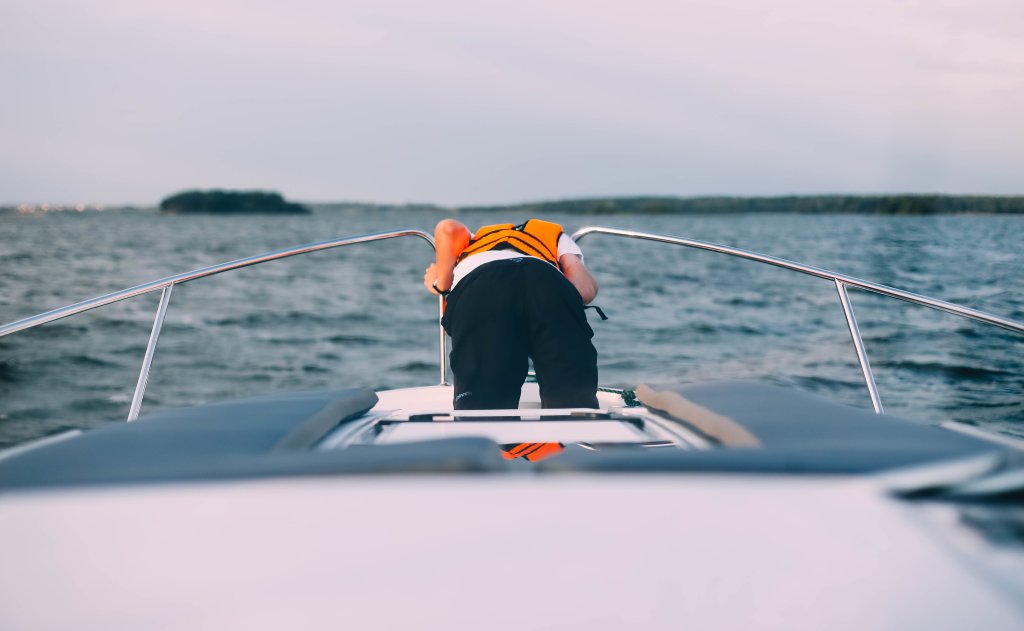Quick Guide: How to treat seasickness
Literally anyone can be subject to sea sickness or motion sickness while traveling with a boat.
90% of the people have experienced motion sickness at one point in their lives and only veteran ocean sailors seem rather impervious to it.
But why do people get seasick?
Motion sickness relates to our sense of spatial orientation, which tells the brain where the body is “in space”: what direction it is moving, what direction it is pointing, and if it is turning or standing still. This sense of spatial orientation is regulated by complex interaction of the 4 following mechanisms:
- Both inner ears monitor the directions of motion in three dimensions.
- Our eyes observe where our body is in relation to its surroundings as well as the direction of motion.
- Skin pressure receptors such as those located in the feet and seat sense in what direction the gravitational pull affects our body, in other words: what side is up?
- Muscle and joint sensory neural receptors report which parts of the body are in motion and in which relative direction.
All these sensory data will subsequently be processed in the central nervous system, which enables us to balance, move and position ourselves properly in our three dimensional surroundings.
The symptoms of motion sickness appear when the brain receives conflicting messages from the 4 systems. And a conflict on board can easily occur: when reading a book on deck your eyes observe no motion, yet your inner ears feel the motion of the yacht due to the waves.

Symptoms of seasickness
The first symptoms are often lethargy and a slight drowsiness. But it usually start with a nauseous feeling and/or a slight cold sweat. Then these symptoms increase, and the face becomes paler, perhaps even greenish. Any attempt to concentrate on a task will worsen this predicament. The nauseous feeling eventually becomes incontrollable, and leads to – sometimes violent – vomiting.
The victim should be wearing a life jacket and/or be tethered via a safety harness.Prevention of seasicknessHours before casting off you could well use an over-the-counter antihistamine such as meclizine or dimenhydrinate and you should – before and during the voyage – avoid spicy or rich foods, alcohol and apples. For longer trips, a prescription medication called Transderm-Scopolamine patch can be worn behind the ear for up to three days at a time. Side-effects of these medications usually consist of sedation and dry mouth.
How to act in case I get seasick:
- Fool Yourself – Believe it or not (your choice) but 99% of seasickness is mental. Even the most stalwart mariner begins to feel queazy at times… but quickly solves the problem by telling themselves “I don’t get seasick!”. Repeat it 3 times in the mirror before departure. And make sure you say it with conviction!!
- Look at the Horizon – When a ship is riding to a heavy sea everything is moving. The only thing that is stationary is the horizon and looking at it will often reset your internal equilibrium.
- Follow your nose – Motion sickness is often caused by bad smells. Even pleasant smells, like a girlfriend’s perfume, can often send you for the railings. So if you smell anything strange, move into fresh air fast. And be sure to keep your living area clean… a dirty room or body is a quick way to invite odor.
- Watch what you eat – One of the reasons people get seasick on cruise ships is that they over-eat. When the waves hit greasy, high-fat foods swirl around your stomach like water in the head. Also avoid sugar which can make you light-headed and dizzy.
- Chew gum helps relieve symptoms. You will find just the special gum in our med kit inside our yacht.
- Alcohol can make you sea-sick on dry land, the effects are worse in open ocean so avoid drinking at all costs.
- Ginger – Whether you chew it, suck on it or dilute it in tea ginger has long been a favorite home remedy for motion sickness.
- Carrot juice, apricot juice, citrus, prunes, mints, black horehound, parsley, sage, rosemary and thyme help cure seasickness. Try them in small amounts.
- Dramamine and Bonine are the two most common seasickness remedies. These are available in our med kit.
- Ambien – One cure for motion sickness is to sleep through it but getting to sleep is hard when you feel miserable.
- Wrist Bands – Anti-Seasickness wrist bands come in two varieties; acupressure and magnetic. If you are getting seasick be sure to take some with you.
- The Patch – Scopolamine patches are worn behind the ear and look like small band-aids but contain small amounts of medicine which secretes into you skin. They are the most popular prescription drug for seasickness and they also come in pill form. The great thing about the patch is that it continues working even after you start to throw-up.
- Close your eyes – Many doctors believe that seasickness is actually your brain getting confused by too many mixed signals. So start to shut these signals down by removing smells, tastes hearing and vision.
- Avoid Books and Computer Screens!
- Get In The Water!
- Stay In The Middle – A ship balances at it’s center so that is the place where motion is least pronounced. The bow and stern should be avoided at all cost.
- Get To Work – Dinghy sailors rarely get seasick and this is because their is too much work to be done by the small crew to notice the bad weather surrounding them. Free your mind and body with work or exercise to avoid getting sick.
- Lay Down – Some say that lying down prevents histamine from reaching the brain, decreasing nausea. Try laying on your back to prevent your stomach from being pushed into the deck by your body weight.
- Ice Water – Immerse your feet in ice water. We are not sure if this is a wive’s tale or real cure but it doesnt harm to try.
- Clean Your Ears – Most of us take frequent showers and clean our ears out regularly with Q-tips but, if you don’t, wax build-up in your ear has been reported to lead to motion sickness.
- Lean Back – Keeping head movements to a minimum may help you reduce the number and complexity of inputs to the brain. To do this recline your chair slightly resting your head.
- Don’t sit around fearing the sickness and go ahead an tickle your throat by sticking your fingers way down inside.
- Monitor your breathing – Hyperventilation can lead to lightness of head and induce many of the symptoms of seasickness. Take deep, controlled breaths and stay calm to prevent hyperventilating. If you still can’t stop then breathing into a paper bag may help.
- Decongest – Stuffed and runny noses play havoc on the inner ear.
- Get Some Rest!



